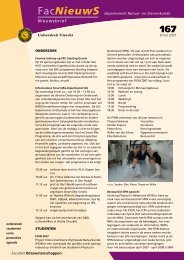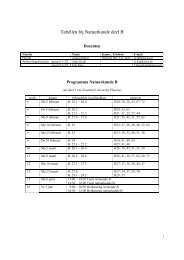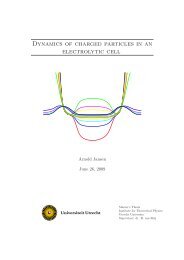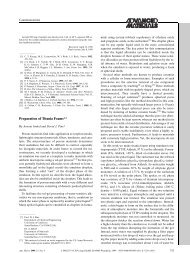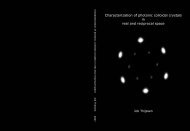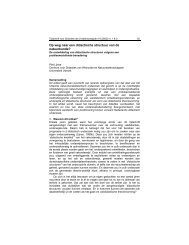Sedimentation Equilibrium of Mixtures of Charged Colloids
Sedimentation Equilibrium of Mixtures of Charged Colloids
Sedimentation Equilibrium of Mixtures of Charged Colloids
Create successful ePaper yourself
Turn your PDF publications into a flip-book with our unique Google optimized e-Paper software.
5.2 Ideal distributionsCharge regulating systems have an additional degree <strong>of</strong> freedom to lowerthe energy, when compared to systems containing colloids <strong>of</strong> fixed charge.Therefore the equilibrium free energy <strong>of</strong> a charge fixed system is expected tobe an upper bound <strong>of</strong> a regulating system. A regulating system will now beimitated by a series <strong>of</strong> calculations <strong>of</strong> polydisperse systems (n=21) <strong>of</strong> colloids<strong>of</strong> fixed charge. The total charge <strong>of</strong> the colloids∑21Q c =i=1∫ H0dx Z i ρ i (x), (5.8)is kept fixed, while the distribution is changed. The system with the lowestmean height is considered the equilibrium distribution <strong>of</strong> a regulating systemwith total colloid charge Q c , and free exchange <strong>of</strong> charge between the colloids(only). Actually we should consider the system with the lowest grandpotential, see discussion below. The sedimentation is pictured in figure 5.2.The distribution is chosen to be Gaussian.Z mean=250, 21 components, λ B=2.3nm, κ −1 =98nm, D=150, L=1mm, η mean=0.0050.020.015Center <strong>of</strong> mass4.53.50 1 2 3η tot 0.01Gauβwidth/Z meanequimolar case0.00500 5 10 15 20X (cm)Figure 5.2:046



